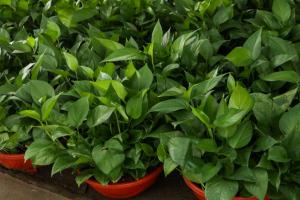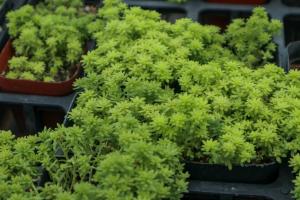How to Pot a Rubber Plant
Rubber plants are excellent houseplants that can be grown both indoors and outdoors. They are easy to care for and can grow up to 100 feet tall. Potted rubber plants can add a touch of greenery and elegance to any space. Below is a step-by-step guide on how to pot a rubber plant:
Choose a Pot
The first step in potting your rubber plant is choosing the right pot. The pot should be big enough to allow the roots of the plant to grow freely without getting cramped. The ideal pot should be at least 2 inches wider than the root ball.
The pot should also have drainage holes at the bottom to allow excess water to drain out. The drainage holes prevent water from sitting in the bottom of the pot, which can cause root rot.
Prepare the Potting Mix
Next, you need to prepare the potting mix. A good potting mix should be well-draining to prevent waterlogging. You can create a potting mix by mixing together perlite, peat moss, and vermiculite. You can also use a pre-made potting mix from a garden store.
Remove the Plant from its Current Pot
Once you have the right pot and potting mix, the next step is to remove the rubber plant from its current pot. To do this, gently tip the pot on its side and tap the sides to loosen the soil. You can also use a trowel or knife to loosen the roots if they are tightly packed.
Repot the Plant
After removing the plant from its current pot, add a layer of potting mix to the bottom of the new pot. Place the root ball of the rubber plant on top of the potting mix and add more potting mix around it. Press down gently to ensure that the potting mix is compact around the root ball.
Water the plant lightly to settle the soil around the roots. Do not overwater the plant as this can lead to root rot. After watering, place the plant in a bright, indirect location where it can grow and thrive.
Caring for Your Rubber Plant
Now that you have potted your rubber plant, it is important to care for it properly. Rubber plants thrive in bright, indirect sunlight and prefer moist soil. Water the plant when the top inch of soil feels dry to the touch.
Keep the plant away from drafty areas and avoid placing it near heating vents or air conditioning units. During the growing season, fertilize the plant regularly to promote growth and health.
In conclusion, potting a rubber plant is a simple process that requires a few supplies and some basic gardening skills. By following the steps outlined above, you can successfully pot your rubber plant and enjoy its beauty and benefits for years to come.

 how many times do yo...
how many times do yo... how many planted tre...
how many planted tre... how many pine trees ...
how many pine trees ... how many pecan trees...
how many pecan trees... how many plants comp...
how many plants comp... how many plants can ...
how many plants can ... how many plants and ...
how many plants and ... how many pepper plan...
how many pepper plan...
































